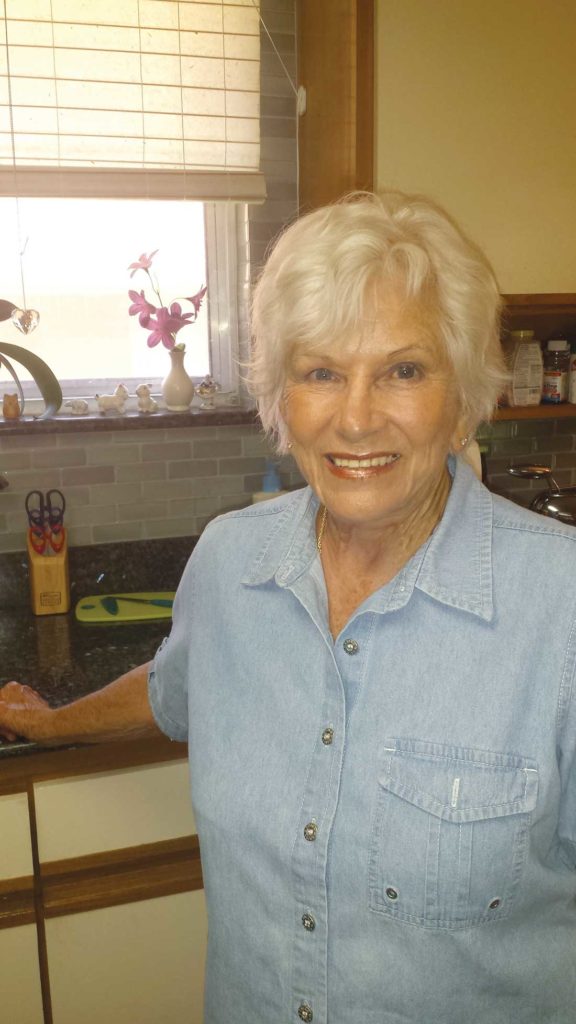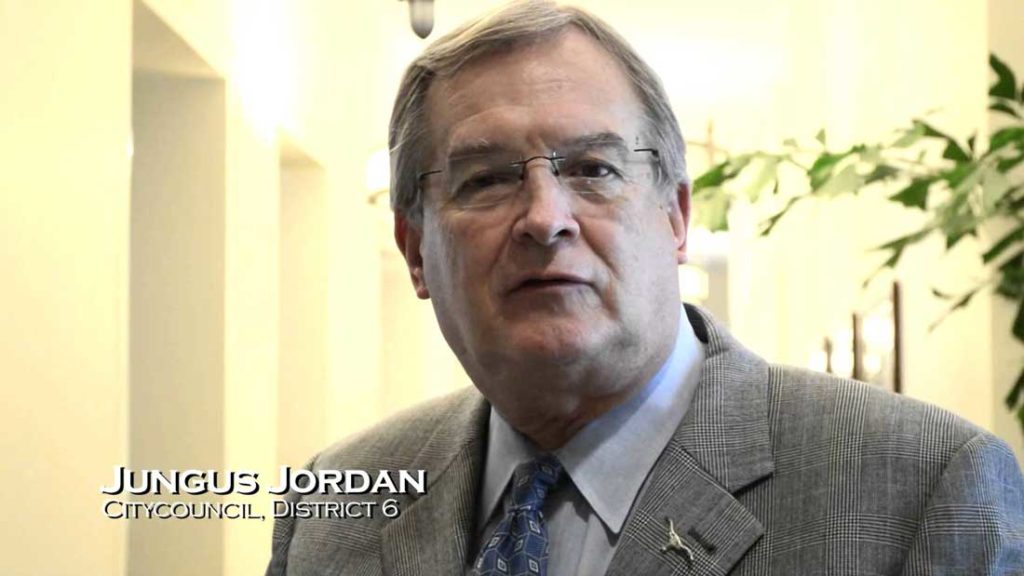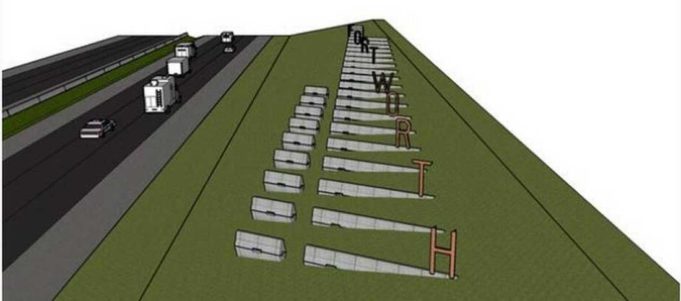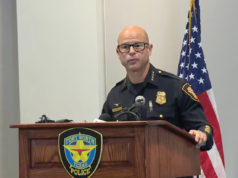A gateway monument, proposed in 2004 to be put alongside I-30 in eastern Fort Worth, is an example of how art by committee is generally doomed. The Arts Council of Fort Worth, a 54-year-old nonprofit that serves the interests of local artists and arts groups, was put in charge of managing the city’s Public Art program to fulfill the vision laid out in the city’s public art master plan. It is wise for the Arts Council to consider the opinions of city leaders and community stakeholders when selecting an artist to create a design. But once an artist is selected and some basic ground rules established, then everyone should get out of the way and let the artist create.
Art by committee sucks.
This gateway monument isn’t an easy project to pull off. It’s a large, highly visible piece of public art in a high-profile location along a highway right of way. Building something in the right of way of an interstate highway requires traversing a minefield of bureaucracy. Each phase of the project has required discussions and decisions involving city officials, elected officials, an arts commission, a public arts group, neighborhood groups, and state and federal highway officials. Years have passed with lots of talk and little action.
Originally, some Eastside residents wanted the monument built near the little lonesome mimosa tree on the north side of I-30, not far from Oakland Avenue. An artist created a conceptual design. But other residents fought to protect that green space along the highway’s scenic corridor. These naysayers said a hill covered in grass was more welcoming to motorists than a big, gaudy sign. And, they groused, why in the hell is a gateway monument being erected near Oakland Avenue when the city limit is all the way past Loop 820? And what’s up with that ugly-ass design?

“We have a unique entryway into Fort Worth from Dallas, and our part of it is really beautiful,” Eastside activist Wanda Conlin told us years ago (“Ill Will on One Tree Hill,” Nov. 10, 2010). “I want to save as much of it as we can and not clutter it up.”
City officials eased the tension by moving the project farther east, toward Cooks Lane. Still, critics wondered why the city needed an expensive gateway monument and why the East Side would be the only part of town getting one. The original artist backed out after all the delays. A new artist was selected in 2012. All of these actions required meetings and reviews that created more delays and more community involvement.
In 2015, the City Council approved spending about $100,000 on a new design that calls for big, well-lit letters to spell out “Fort Worth” in a cascading fashion.
And now I-30 isn’t even in the mix. Long-term plans for highway expansion and public transportation prompted Federal Highway Administration officials to nix the monument alongside I-30.
The monument is now being considered for Texas 121 near Beach Street, prompting a city councilmember to question the project.
“For this project to go on for 12 years … it’s starting to appear to be a shell game,” District 6 Councilman Jungus Jordan told Sandra Baker of the Fort Worth Star-Telegram this week. “If we’re using public dollars, we’ve got to be accountable. The council needs to be told what’s going on. We can’t stand for this perceived mismanagement. You don’t go 12 years with the money sitting in a bank. There’s something wrong here.”

Jordan, of all people, should know that this is a city project. The program is advised by the Art Commission, whose members are appointed by the City Council. If he doesn’t know what’s going on, that’s on him.
Jordan and his Council buddies need to act like leaders. Let the Arts Council wrangle the artists and designers, let the Arts Commission provide information and basic parameters as guidance, and let the artists and designers be creative and do their thing. And then build the damn thing and move on to new business.












